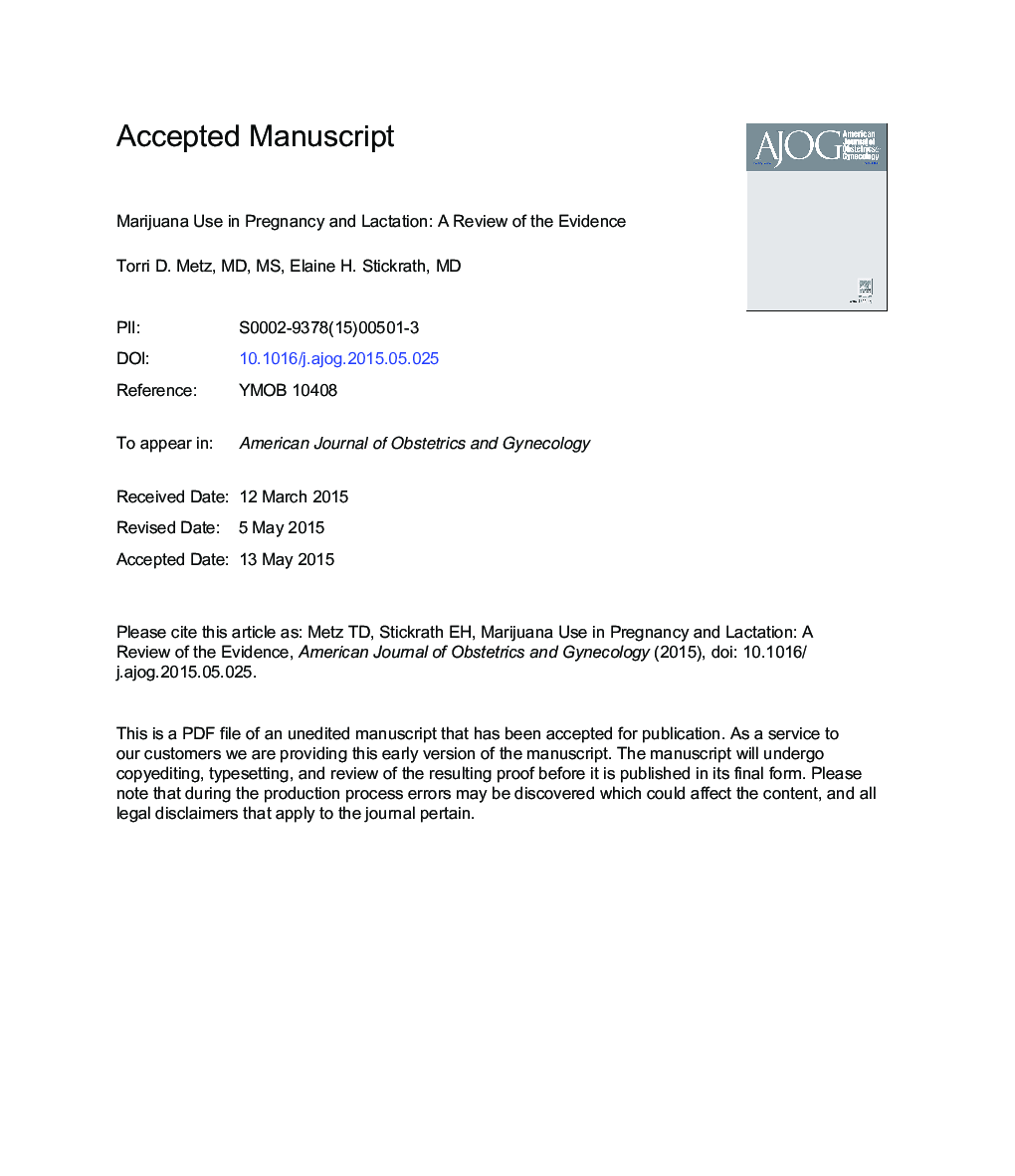| Article ID | Journal | Published Year | Pages | File Type |
|---|---|---|---|---|
| 6143840 | American Journal of Obstetrics and Gynecology | 2015 | 36 Pages |
Abstract
With the legalization of recreational marijuana in many states, we anticipate more women will be using and self-reporting marijuana use in pregnancy. Marijuana is the most common illicit drug used in pregnancy, with a prevalence of use ranging from 3% to 30% in various populations. Marijuana freely crosses the placenta and is found in breast milk. It may have adverse effects on both perinatal outcomes and fetal neurodevelopment. Specifically, marijuana may be associated with fetal growth restriction, stillbirth, and preterm birth. However, data are far from uniform regarding adverse perinatal outcomes. Existing studies are plagued by confounding by tobacco and other drug exposures as well as sociodemographic factors. In addition, there is a lack of quantification of marijuana exposure by the trimester of use and a lack of corroboration of maternal self-report with biological sampling, which contributes to the heterogeneity of study results. There is an emerging body of evidence indicating that marijuana may cause problems with neurological development, resulting in hyperactivity, poor cognitive function, and changes in dopaminergic receptors. In addition, contemporary marijuana products have higher quantities of delta-9-tetrahydrocannabinol than in the 1980s when much of the marijuana research was completed. The effects on the pregnancy and fetus may therefore be different than those previously seen. Further research is needed to provide evidence-based counseling of women regarding the anticipated outcomes of marijuana use in pregnancy. In the meantime, women should be advised not to use marijuana in pregnancy or while lactating.
Related Topics
Health Sciences
Medicine and Dentistry
Medicine and Dentistry (General)
Authors
Torri D. MD, MS, Elaine H. MD,
